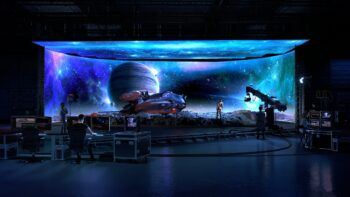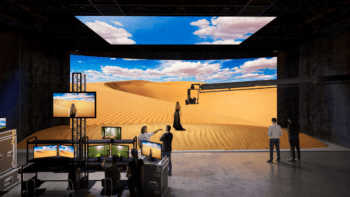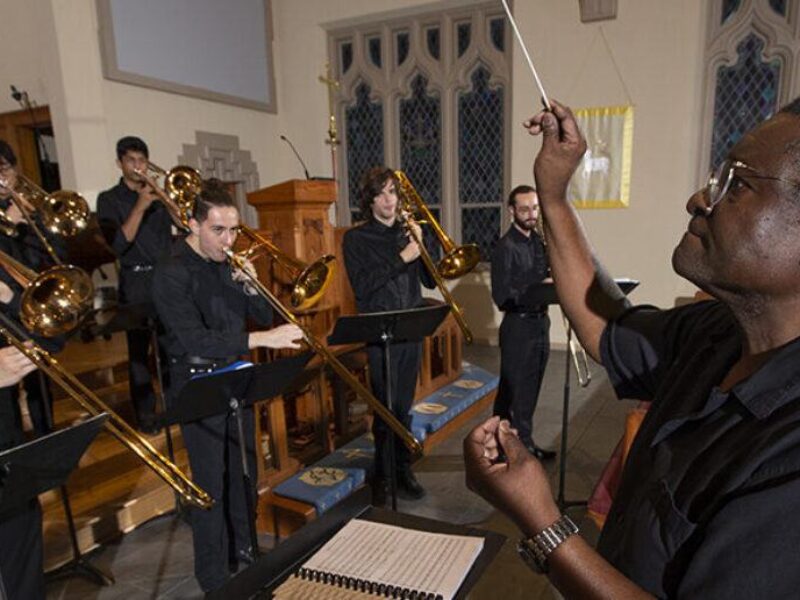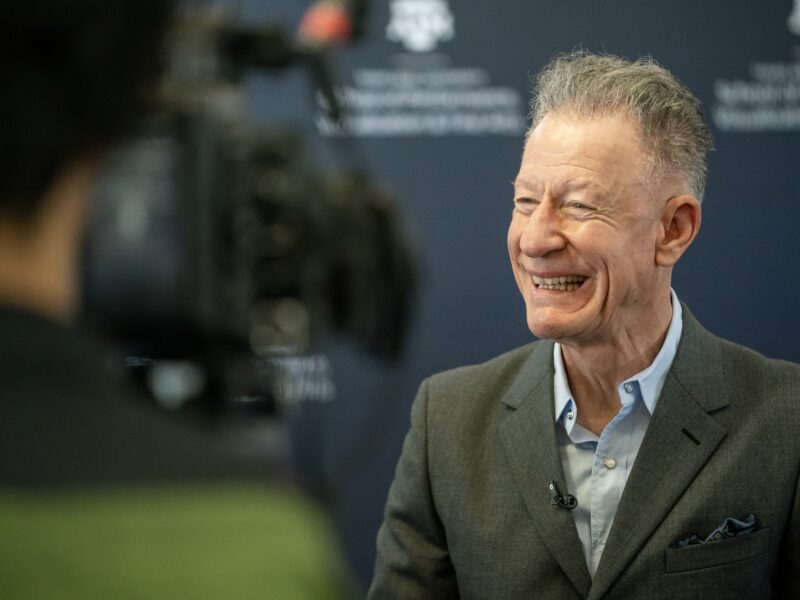First-Of-Its-Kind Virtual Production Institute Approved By Board Of Regents

The Texas A&M University System Board of Regents on Feb. 8 approved the establishment of the Virtual Production Institute, the nation’s first institute of its kind that comprehensively integrates real-world scenarios and the latest in extended reality technology to advance problem-solving and support workforce development across industries. The new institute will be part of the Texas A&M School of Performance, Visualization and Fine Arts.
The institute will be based on the Bryan-College Station campus with an extension at the new Texas A&M-Fort Worth campus. Institute faculty, staff and equipment to support performance capture, large-scale mixed-reality environments, technology-infused classrooms and high-performance computing and instrumentation were funded as a special item by the 88th Texas Legislature at $25 million with strong support from the state’s growing media and entertainment industry.
“Thanks to the support of the Texas Legislature, the Virtual Production Institute will expand our ability to prepare students for the jobs of the future like never before,” said Gen. (Ret.) Mark A. Welsh III, president of Texas A&M University. “With the leading visualization program in the State of Texas, the launch of this institute builds on our expertise to drive workforce development leveraging the latest technologies, supporting the state’s efforts to lead in multiple industries.”
The extended reality market is projected to be a $10.3 billion industry in the United States in 2024. Students will learn the art and science of the development and applied use of extended reality — which incorporates augmented and virtual reality, display technology, sensing technology, artificial intelligence, real-time 3D graphics and simulation — using the latest technology that will prepare them for an expanding Texas job market. The institute will also support enhanced curriculum across the university as other schools and departments tap into virtual production capabilities that align with changing workforce needs.
The institute’s reach extends beyond media and entertainment, branching into training and development across industries, and creating digital twins of real-world objects and environments. The university will collaborate with industry members to provide hands-on experience to students and explore new applications for virtual production, according to Tim McLaughlin, interim dean of the Texas A&M School of Performance, Visualization and Fine Arts.
“The Virtual Production Institute creates an interdisciplinary ecosystem that will meet industry needs in media and entertainment, health care, the military, first responders, manufacturing, aerospace and live entertainment, among other uses,” McLaughlin said. “There’s currently a workforce gap impeding a more rapid and broader adoption of virtual production. Our plan includes addressing that gap and exploring new ways to use the technology.”
Plans for the institute include building virtual production prototype stages in Bryan-College Station and Fort Worth by fall 2024 and larger production stages by January 2025. A minor in virtual production and related courses in the university’s renowned Visualization program are being planned to start in fall 2024 with classes offered both at the main campus in Bryan-College Station and in Fort Worth.
Virtual production stages create more advanced visuals than green-screen technology allows by incorporating an LED wall showing computer-generated imagery to create immersive environments. Augmented reality — in which additional effects and structures are used in tandem with performers in front of the LED wall — creates enhanced visual effects.
David Parrish, a 28-year veteran in visual effects with Industrial Light & Magic, Sony Pictures Imageworks and Reel FX, was recently named director of the School of Performance, Visualization and Fine Arts at Texas A&M-Fort Worth. Parrish said he is eager to develop and guide the new institute, calling virtual production’s capabilities “groundbreaking.”
“We have the opportunity to put in a facility not only to train students on how to succeed and thrive in that kind of environment, but also to be utilized by industry professionals,” he said. “There’s an opportunity for our virtual production setups to be a major benefit in the entertainment industry and provide students with access to technology that is going to prepare them so well in any number of facets. It’s also more than entertainment, with collaboration and utilization across a number of industries that will benefit from this technology.”
The institute positions Texas A&M as a leader in research and educating the future workforce to use extended reality technology to solve challenges across industries, McLaughlin said.
“Texas A&M and the School of Performance, Visualization and Fine Arts are in an excellent position to make a big impact with the Virtual Production Institute,” McLaughlin said. “We have the breadth of expertise to cover a wide range of applications. We have strong support from our industry and civic partners. And we have clever, creative and motivated students. The alignment of need, technology development and support make this the right time to launch the institute.”
For more information, please see vpi.tamu.edu.

Media contact: Rob Clark, rob.clark@tamu.edu





